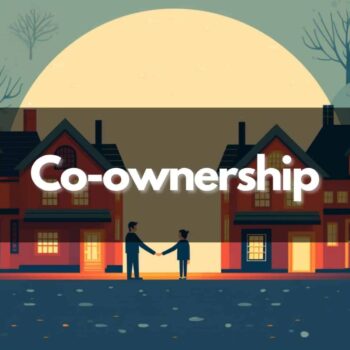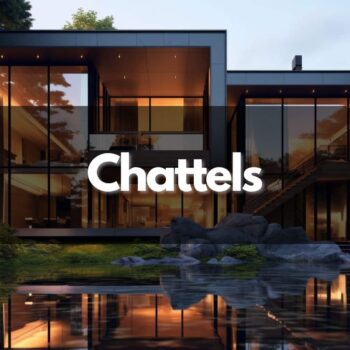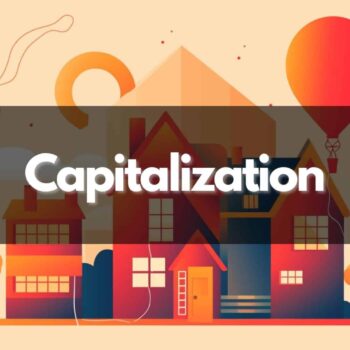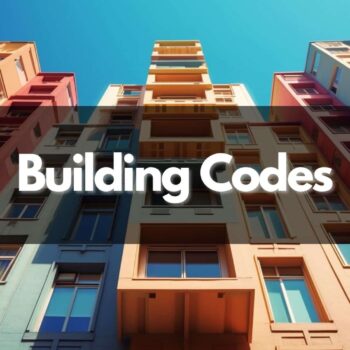There are government-backed organizations that perform various roles to make it easier for people to obtain homeownership at reasonable rates. With the help of these organizations, lenders, investors, and bank regulators invest more in mortgages by purchasing and issuing them.
These enterprises oversee the activities related to loans and mortgages and are responsible for on-time payments of principal and interest. Since mortgages backed by federal programs are more attractive, investors and lenders purchase them and sell them in the market. Because of such guarantees provided by government-backed institutions, the mortgage market is flourishing. One such institution is Ginnie Mae, which we’ll discuss in this post.
What is Ginnie Mae?
Ginnie Mae, or Government National Mortgage Association, is a government organization that provides guarantees for investors in mortgage-backed securities. The federal corporation guarantees USDA, FHA, and VA loans and improves the market’s interest in securities. It does so by ensuring timely payments on mortgage-backed securities.
The organization doesn’t create or offer mortgages directly but guarantees the mortgages for single and multi-unit properties. Homebuyers can get these loans at lower interest rates because the government backs them. Ginnie Mae also works with other organizations to make housing more affordable. Thus, it provides liquidity in the housing market for mortgages guaranteed by the U.S. government.
Mortgage-Backed Securities
Mortgage-backed securities are helpful investment tools, just like bonds. Each Mortgage-backed security consists of a couple of mortgages in the form of a pool bought from the financial institutions that issued them. Investors, lenders, and issuers who have invested in these MBS receive payments similar to bond coupon payments. For investors, MBS is a safe investment as it helps get the amount back from mortgages.
History of Ginnie Mae
Ginnie Mae was established in 1968 to provide affordable homeownership to the people. It is a government-backed organization created as a part of HUD (U.S. Department of Housing and Urban Development). Ginnie Mae was also the first organization that created mortgage-backed securities in 1970, but now it doesn’t issue, sell, or buy these securities. The organization was formed as a result of the split of Fannie Mae in 1968. After this split, Fannie Mae used to purchase government-backed mortgages, and Ginnie Mae offered guarantees for mortgage-backed securities. It is a wholly-owned U.S. Government organization within the HUD and is the main financing mechanism for all government-guaranteed or government-issued mortgages.
What Does Ginnie Mae Do?
Ginnie Mae doesn’t issue any mortgages; instead, it only guarantees mortgage-backed securities (MBS) that are covered by federal programs. The organization ensures that investors and lenders who purchase mortgage-backed securities do not experience any issues and that their principal and interest payments are made on time. These securities also save the investors from losses if the borrower defaults on the mortgage. Because of this reason, investors take more interest in MBS because they are more secure than other mortgages. These guarantees make other government-back mortgages like FHA, USDA, and VA more attractive.
Mortgage lenders mostly don’t offer loans to risky clients. For instance, clients with low credit scores or first-time buyers are riskier than others. These lenders want to reduce risk, and thus they don’t offer mortgages to such clients. However, with mortgage-backed securities, lenders offer mortgages quickly to risky clients. Ginnie Mae doesn’t buy or sell mortgages in the secondary market or create mortgage-backed securities (MBS). It just guarantees these mortgage-backed securities that comprise federally insured loans.
Steps to Manage Risks
Ginnie Mae takes measures and steps to minimize the risks and losses for the borrowers. The organization manages risks in the following ways:
- Makes contracts with the issuers to make sure they make timely payments if the borrowers don’t make payments
- Sets a few performance criteria, standards, and net worth for the issuers
- Ensures that all mortgages are backed by or enrolled in a guarantee program or a federal insurance
- Removes and replaces services that don’t make payments on time
- Keeps a capital reserve to cover the losses before relying on the U.S. government
- Funds the capital reserve by using the service fee obtained from Mortgage-backed securities
Ginnie Mae Programs and Products
Depending on the type of mortgage, Ginnie Mae works with different federal organizations to provide guarantees. It offers the following different programs:
HMBS Program
Ginnie Mae offers a Home Equity Conversion Mortgage (HECM) securities program that provides capital for FHA-insured reverse mortgages. The HECM loans are also pooled into HECM Mortgage-Backed Securities (HMBS) through this Ginnie Mae program. Ginning Mae is the guarantor of securities for those approved lenders participating in their programs. Ginnie Mae supports the mortgage market’s liquidity through these programs and lowers the cost of mortgages for senior citizens.
Single-Family Program
The Single-Family Program lowers the cost of borrowing by adding liquidity to the market. Most securities offered by Ginni Mae are for single-family mortgages that are offered by FHA (Federal House Administration), VA (Department of Veteran Affairs), and USDA (U.S. Department of Agriculture). Ginnie Mae securitizes fixed-rate single-family guarantee mortgages into pools for the approved lenders and issuers.
Multi-Family Program
Through the multi-family programs, Ginnie Mae makes affordable renting housing easier for people. The organization has guaranteed millions of funds for multi-family mortgage-backed securities until now. The enterprise ensures accessibility of decent rental units to the people by providing affordable housing programs. The multi-family program covers hospitals, apartment buildings, assisted living facilities, and nursing homes. Ginnie Mae helps lenders to provide mortgages at low-interest rates for developers and property owners.
Manufactured Housing Program
The Manufactured Housing Program by Ginnie Mae offers guarantees for mortgages insured by FHA for purchasing new or used manufactured homes. This program helps improve the liquidity in the mortgage market and makes mortgages more affordable for borrowers. Unlike other government-backed organizations, Ginnie Mae doesn’t issue loans or invest in loans directly; it grants securities to approved lenders.
Ginnie Mae vs. Fannie Mae vs. Freddie Mac
Like Ginnie Mae is a government-backed organization, Fannie Mae and Freddie Mac are such enterprises. However, all these government-sponsored enterprises work differently and have different purposes. It must be noted that Ginnie Mae is the only government-backed agency that guarantees mortgage securities and enjoys government protection against default. The following are the main differences between these organizations:
| Ginnie Mae | Fannie Mae | Freddie Mac | |
| Establishment | 1968 | 1938 | 1970 |
| Aim | Improve the attractiveness of FHA, VA, and USDA loans in the market | Purchases mortgages from larger banks | Purchases mortgages from smaller banks |
| Functions | Guarantees mortgage-backed securities but doesn’t buy loans | Set guidelines for mortgages | Set guidelines for mortgages |
Ginnie Mae Example
Example: Suppose Richard wants to purchase a house that costs $225,000, and he can pay less than $8,000 as a down payment. Richard visits a bank to get a mortgage, and the bank evaluates Richard’s score. The bank approves the loan, and since it is an FHA loan, Richard has to pay only 3.5% as a down payment. Richard received the funds to purchase the house, and he makes periodic payments to the bank according to the loan agreement. On the other hand, the bank sells this mortgage to another institution. The financial institution pools this mortgage with other similar mortgages. Ginnie Mae provides guarantees for these mortgage-backed securities, which are then purchased by investors.
Frequently Asked Questions
What Role Does Ginnie Mae Play for Homebuyers?
Ginnie Mae makes home ownership easier for homebuyers. Those applicants who don’t qualify for a conventional mortgage can easily qualify for government-backed loans for buying homes. If Ginnie Mae had not provided security to the lenders, these lenders would not offer mortgages to high-risk applicants. With the securities guaranteed by Ginnie Mae, lenders easily offer mortgages to their applicants.
How Does Ginnie Mae Provide Guarantee?
Ginnie Mae’s main aim is to ensure that investors in Mortgage-backed securities don’t face any difficulty and don’t face any losses from defaults. The organization guarantees MBS for the mortgages offered by FHA, USDA, VA, and HUD. For FHA single and multi-family mortgage insurance programs, Ginnie Mae offers 100% insurance on mortgages. For HUD, Ginnie Mae guarantees 100% of the mortgage; USDA guarantees up to 90%, and VA loans mostly guarantee up to 25% of the mortgage.
What to Know for the Real Estate Exam
Ginnie Mae is a government-sponsored enterprise that provides guarantees on mortgage-backed securities. A federal corporation in HUD places guarantees on federally insured mortgage loans. Ginnie Mae supports FHA, USDA, and VA loans to make them more attractive. All of these loans are very beneficial for first-time homebuyers, low-income applicants, veterans, and military members. The guarantees provided by Ginnie Mae make these mortgage-backed securities more reliable. These mortgages are very popular among lenders and investors as they know their investment is secure and reliable. If you want to master your real estate exams, learn other Real Estate Definitions so that nothing is missed.











